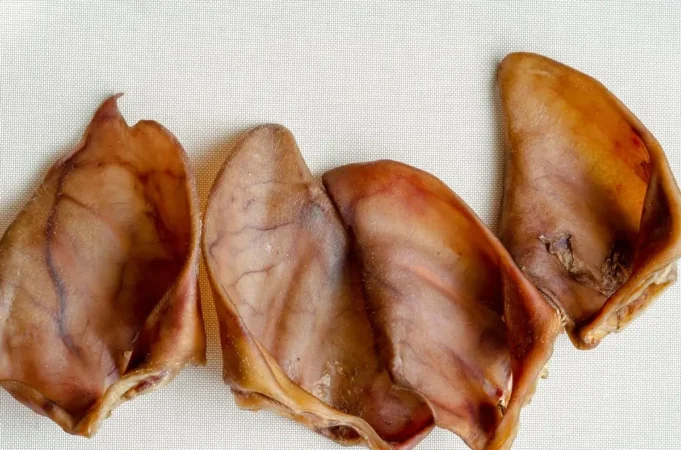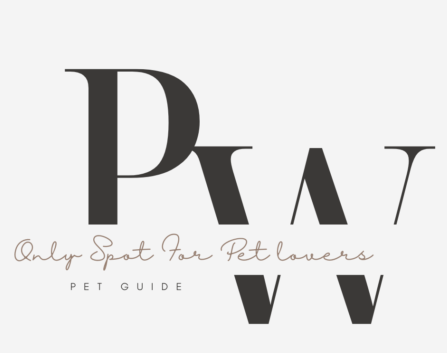As a dog lover, choosing the best treats for your furry friend can often feel quite challenging. With so many options available, there’s a growing shift among pet owners to find wholesome, natural products without harmful chemicals. Pig ears have become a popular choice for many, offering a tasty, nutritious snack that most dogs love. Generally, the answer is yes — pig ears can be a safe and nutritious treat, but they must be given with care. As a responsible owner, it’s important to ensure your pet only consumes them in moderation to maintain a balanced diet.
The porky taste and tough texture make them a delicious and wholesome treat that many dogs enjoy. However, they are not suitable for every dog. It’s important to consider factors like your dog’s age, size, and health before incorporating pig ears into their routine. While these treats are a good option, they must not become a regular part of your dog’s daily diet.
ARE PIG EARS SAFE FOR DOGS?

Many pet owners are concerned about whether pig ears are safe for their dogs, especially as more people become health-conscious and reconsider common chews like rawhide or peanut butter. Pig ears are a popular treat, but they require scrutiny to ensure safety. Some dogs may benefit more from cow ears or other natural chews that provide similar benefits. Pet owners, whether caring for a puppy or an older dog, must be mindful of the quality of treats they offer.
When deciding if pig ear treats are safe for your dog, several factors should be considered. For example, my 50lb dog doesn’t have food sensitivities, so I trust him with these treats. However, when he was a puppy, I only allowed him to chew for a limited time to avoid stomach upset. Each dog reacts differently—some dogs handle chewing fine, while others may struggle and get hurt. This makes the decision highly dependent on the individual dog and its ability to chew safely.
When buying pig ears or other dog treats, always ensure they are of high quality. Look for whole, unaltered pig ears, as strips or pieces may be processed with chemicals. Frozen raw ears from reputable sources are often the best option, while most store-bought cooked pig ears may contain harmful additives. Although cooked ears might seem safer, they can still cause issues like digestive upset or even intestinal blockage. Avoid smoked meats altogether, as they increase the risk of cancer in dogs, and be cautious of irradiated products.
HOW ARE PORK EARS PRODUCED?
The production of pig ears for dog treats goes through several steps to ensure they are safe and of good quality. These ears are sourced from pigs raised for meat production, making them by-products that would otherwise go to waste. After cleaning the ears to remove debris, hair, and contaminants, they are boiled to remove fat, soften cartilage, and kill harmful bacteria. Finally, the ears are either air-dried or baked at a low temperature to reach the right texture and become shelf-stable.
- Sourcing: Pig ears are by-products from pigs raised for meat production.
- Cleaning: The ears are cleaned to remove debris, hair, and other contaminants.
- Boiling: Ears are boiled to remove fat, soften cartilage, and kill harmful bacteria.
- Drying or Baking: Ears are air-dried or baked at a low temperature to dehydrate them.
- Packaging: Once dried, the ears are packaged for sale, sometimes with preservatives to extend shelf life.
This process ensures that pork ears are safe for dogs to chew without spoiling quickly.
BENEFITS OF FEEDING PORK EARS TO DOGS
There are multiple benefits of feeding pork ears to dogs but only in moderation. Let’s have a look on them:
DENTAL HEALTH BENEFITS
Giving your dog pig ears can offer several surprising dental benefits.
- Chewing on these treats can help reduce the buildup of plaque and tartar on your dog’s teeth.
- As dogs chew, the act of mechanically scraping their teeth can lead to better oral hygiene.
- This natural chewing helps keep their gums healthy and contributes to fresher breath, fighting off bad breath that can be unpleasant for both pets and their owners.
I’ve noticed that my dog’s teeth look much cleaner since I started adding pig ears to their diet. Many veterinary professionals recommend these treats as part of a good dental care routine for dogs. It’s comforting to know that such a simple treat can make a significant difference in my dog’s overall health.
PHYSICAL HEALTH BENEFITS
Pig ears offer several physical health benefits that can enhance your furry friend’s well-being. Here’s a quick look at the advantages:
- Excellent Source of Protein: Pig ears are a great source of protein for dogs.
- Rich in Essential Amino Acids: They provide essential amino acids that help in maintaining muscle mass.
- Energy Levels: Pig ears support energy levels needed for daily activities.
- Valuable Nutrients for Senior Dogs: For senior dogs or those with osteoarthritis, pig ears contain:
- Glucosamine
- Chondroitin
These nutrients support joint health and improve mobility.
- Collagen from Cartilage: The cartilage in pig ears provides collagen, which is essential for keeping joints healthy and flexible.
- Boosts Overall Health: Including pig ears in a dog’s diet boosts their overall health.
- Keeps Dogs Lively and Active: Pig ears help keep pets lively and active.
- Fatty Treats for a Well-Rounded Diet: The addition of these fatty treats ensures dogs enjoy a well-rounded diet while indulging in something they love.
MENTAL STIMULATION BENEFITS
When we talk about mental stimulation benefits of pig ears for dogs, it’s essential to understand how these treats cater to their natural instincts. Chewing on pig ears provides a healthy outlet for your dog’s natural behavior. This activity keeps them occupied, which is crucial in preventing boredom. A bored dog might develop behavioral issues or bad habits, like chewing on furniture or digging. In my experience, giving my dog pig ears not only keeps him engaged but also contributes to his overall happiness. This mentally stimulating activity helps channel their energy in a positive way, keeping them happy and well-adjusted.

NUTRITIONAL BENEFITS
When considering the nutritional benefits of pig ears, it’s important to recognize how they contribute to a dog’s overall diet. These treats are wholesome and nutritious, providing a savory, meaty flavor that dogs simply love. Unlike some other treats, pig ears can capture a dog’s attention and satisfy their cravings for something delicious. Not only do pig ears bring joy to your furry friend, but they can also help to lower any unpleasant odor that might come from less natural snacks. As a dog owner, I’ve noticed how happy my dog becomes when he gets to enjoy these tasty treats, knowing that I’m giving him something real and beneficial.
CONVENIENCE AND QUALITY BENEFITS
They are ideal for keeping your dog busy and are a great option for pet parents who want to provide a treat that is both long-lasting and easy to chew. With a soft texture, pig ears can be enjoyed by dogs of all sizes, including small breeds, puppies, and even seniors who may have dental issues. Here’s a closer look at their many advantages:
- Long-lasting: Pig ears provide hours of chewing enjoyment, making them perfect for keeping your dog occupied for minutes or even hours.
- Ideal size: Available in various pieces and slices, they can easily accommodate different dog sizes and chewing capabilities.
- Inexpensive: Compared to other treats like bully sticks or cow ears, pig ears are often more affordable and can be purchased in bulk.
- High quality: Many pig ears are made with high-quality meat, avoiding artificial fillers, additives, and chemicals. This gives peace of mind to pet parents.
- Sensitivity-friendly: Since they are natural, they can be a good option for dogs with sensitivities or allergies. Pet parents can avoid mystery ingredients that are often found in commercial treats.
As a dog owner, I appreciate how pig ears can keep my furry friend satisfied and engaged without worrying about harmful ingredients.
HEALTH RISKS
When considering pig ears as a treat for your dog, it’s essential to understand the health risks involved. One major concern is the calorie content. An average pig ear contains around 100 calories, which can vary greatly depending on the size of the ear. If your dog needs to limit fat for any reason, consider choosing a chew made from a different type of protein, such as deer antlers.
GENERAL HEALTH ISSUES
Health Disadvantages Triggered by Pig Ears:
- High calorie content can lead to weight gain.
- Excessive fat content may not be suitable for dogs on low fat diets.
- Risk of intestinal blockage if the dog swallows the treat whole.
- Potential for choking, especially in smaller dogs.
- Not ideal for tenacious chewers, as they may not keep them busy for long.
- Can cause digestive issues in dogs with sensitive stomachs.
- May lead to poor dental health if not properly supervised while chewing.
CDC, FDA, and Salmonella Concerns
When it comes to pig ear dog treats, recent updates from the CDC and FDA have raised serious alarms about their safety for our furry friends. Many people have fallen sick after handling these treats or caring for pets that ate them. The total number of ill individuals has reached 34, and the ongoing investigation reports that 127 people have been infected with outbreak strains of Salmonella across 33 states. It’s concerning that 26 of those affected were hospitalized, and thankfully, no deaths have been reported. Notably, 24 of these illnesses were among children younger than 5 years. The epidemiologic, laboratory, and traceback evidence suggest that contact with pig ear dog treats from many suppliers is the likely source of this outbreak.
In 2019, the FDA issued a warning about the salmonella risk associated with these products coming from countries like Argentina, Brazil, and Colombia. The vendors supplying these treats are found in major retail chains such as Pet Supplies Plus and Hollywood Feed. While it’s comforting to know that dogs might not be as susceptible to salmonellosis, it’s still important to remain vigilant. A staggering 154 people across 34 states got sick, with 35 requiring hospitalization due to this multi-drug resistant bacteria. As a responsible pet owner, it’s crucial to ask your retailer about how they ensure the ears are not contaminated. Always remember to wash your hands and surfaces after handling these treats, and it’s a good idea to teach your children to stay away from these treats altogether.
Key Recommendations
- Avoid buying or feeding pig ear dog treats.
- Always wash your hands after handling these products.
- Keep children away from the treats.
- Regularly check for updates from the CDC and FDA regarding salmonella outbreaks.
- Stay informed about the traceback data from recent investigations.
- Look for retailers who have voluntarily recalled potentially contaminated products.
ARE COW EARS GOOD FOR DOGS?
When thinking about whether cow ears are good for dogs, it’s important to know a few key points. Cow ears can be good for dogs, especially when they are raw and whole. Many dog owners prefer to buy them frozen and then thaw them before feeding. These ears are made of cartilage, which makes them a great chew that supports oral and joint health.
You should beware of cooked cow ears, as they may be treated with chemical additives or preservatives. If you choose to buy cooked cow ears, it’s best to look for baked ones rather than boiled or smoked. It’s also wise to avoid giving your dog smoked meats due to the increased cancer risk associated with these products. Ensure that they are from pasture-raised cows and that they are all natural with no chemicals added.
Some cow ears might be irradiated, which is harmful to dogs. If you see cow ears that look white, they are most likely irradiated and should not be purchased. There’s also one more thing to keep in mind. Cow ears usually have fur, so they may have gone through some kind of chemical processing to remove the fur. It’s important to find out how your chosen brand was processed and to avoid any that were treated with chemicals.
PIG EARS VS COW EARS
| FEATURES | PIG EARS | COW EARS |
|---|---|---|
| NUTRITIONAL CONTENT | Higher in fat (15%) | Lower in fat (12%) |
| PROTEIN CONTENT | 22 PERCENT | 26 PERCENT |
| COMPOSITION | Made of cartilage | Made of cartilage |
| HEALTH BENEFITS | Contains glucosamine and chondroitin, promotes oral health | Contains glucosamine and chondroitin, promotes oral health |
| FUR | Few sparse hairs | Quite furry |
| COOKING PROCESS | May not need hair removal; could be blanched or scalded | Hair is typically removed during cooking |
| RAW STATE | May have fur (adds valuable fiber) | Typically has hair removed |
| CHEMICAL CONSIDERATION | Verify no chemicals used in processing | Verify no chemicals used in processing |
How Often Can I Give My Dog a Pig Ear?
The frequency of giving pig ears depends on various factors like your dog’s size, age, and overall health. Here’s a simple guide to help you decide:
- For small dogs, it’s best to offer a pig ear once or twice a week. This amount should be sufficient for their needs.
- Larger dogs may be able to tolerate more frequent treats, but keep an eye on their caloric intake.
- It is important to monitor how many calories your dog consumes, so you may need to adjust their regular meals accordingly.
- Always consider the size of the pig ear in relation to your dog. For smaller dogs, it might be wise to serve only a portion or choose smaller options like pig ear bites or pieces, which are made from the inner portion of the ear.
- Your dog’s dietary needs and health status should guide you on the best practices. Always consult your veterinarian for advice on how often you should give pig ears.
- Remember that big treats like these can pack a lot of calories. A single ear can add up quickly, so if you are also feeding cow ears, ensure you account for them in your dog’s daily food totals to avoid ending up with a chubby dog.
How Long Will a Pig Ear Last My Dog?
When it comes to how long a pig ear lasts for your dog, it really depends on a few things like their size and chewing habits. For small dogs or light chewers, a pig ear can last for several hours and can even be enjoyed over multiple chew sessions. However, for larger dogs or those that are aggressive chewers, the pig ear may be consumed in just a few minutes. It’s always a good idea to supervise your dog while they enjoy their treat to ensure they don’t risk choking or swallowing any large pieces.
Can Puppies Have Pig Ears?
Puppies can enjoy pig ears, but there are some important considerations. It is recommended to offer pig ears to puppies aged 16 weeks plus. When it comes to size and hardness, puppies, especially those with baby teeth, may find pig ears too hard to chew. It’s essential to select smaller, softer treats that are suitable for their developing jaws. Additionally, puppies have more sensitive digestive systems compared to adult dogs, so it’s crucial to introduce pig ears slowly and in small amounts to avoid any gastrointestinal upset since they are high in fat and extremely rich. Also, just like adult dogs, you must supervise puppies while they chew on pig ears to prevent choking. Generally, it might be best to wait until your puppy’s adult teeth have come in before giving them pig ears, or you can choose smaller, softer chews that are designed specifically for puppies.
Pasture Raised Ears Are Best
When it comes to treating your puppy, choosing pasture raised ears is the best option. These ears come from animals that eat the foods nature intended, not from factory farmed meats that often contain antibiotics and dewormers. Pasture raised animals are known for being healthier, happier, and leading less stressed lives. They enjoy a diet with a better ratio of omega-6 to omega-3 fatty acids and essential amino acids. In contrast, many factory-farmed animals are fed diets based on GMO corn and soybean meals, which can be harmful. By choosing pasture raised pig ears, you are not only getting a treat that is nutritionally superior, but you are also supporting a more ethical and kinder environment for animals.
Beware Rawhide Fake Ears
When buying treats for your puppy, be careful of manufacturers that try to fool you with phony rawhide products shaped like pig ears or cow ears. These treats can be dangerous for your dog due to their indigestibility and the potential for intestinal blockage. Many of these lookalikes undergo chemical processing that introduces harmful toxins, including heavy metals. It’s essential to buy treats that are genuinely safe and healthy, as fake treats may pose a risk to your dog’s health. Always check the labels and avoid giving your puppy any rawhide that could lead to serious issues.
What Are the Alternatives to Pig Ears?
Here are some great alternatives to pig ears for dogs:
- Chicken Feet: These are a natural treat that many dogs enjoy, and they’re also a good source of glucosamine for joint health.
- Bully Sticks: Made from beef muscle, these are highly digestible and a favorite among dogs.
- Dehydrated Fish Skin: These treats are rich in omega-3 fatty acids and great for your dog’s coat.
- Sweet Potato Chews: A healthy, low-fat alternative that many dogs find delicious.
- Carrots: Fresh carrots can be a crunchy and healthy snack that many dogs enjoy.
- Greenies: These dental chews help clean your dog’s teeth while providing a tasty treat.
- Jerky Treats: Look for natural jerky made from chicken, turkey, or beef without added preservatives.
FINAL THOUGHTS
Pig ears can be a tasty and nutritious treat for dogs, but pet owners should be mindful of potential health risks like high calorie content and Salmonella contamination. Opting for high-quality, pasture-raised options or alternatives such as bully sticks and sweet potato chews can help ensure safe snacking. Always consider your dog’s individual needs and consult your veterinarian for the best dietary choices.
For more information regarding dogs, you can visit our best-book-shop to buy a book for your dog’s wellness.
FREQUENTLY ASKED QUESTIONS







